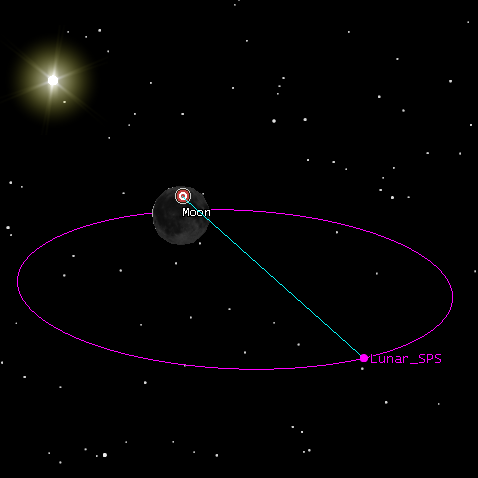Near term application of solar power satellites for robotic Lunar exploration

Solar power satellites (SPS) have been studied extensively over the last 50 years as a potential solution for meeting terrestrial energy demand sustainably. SPS concepts place a satellite in space to collect and wirelessly transmit energy from the sun to a target receiver.
For Earth-based applications, SPS is currently economically impractical. To provide a meaningful amount of energy to the terrestrial grid, solar power satellites must generate in the order of a gigawatt of power, requiring the costly construction of a large satellite in geostationary orbit. These challenges have meant that terrestrial SPS remains a long term goal.
Solar Power Satellites for Robotic Lunar Exploration
Before large scale investment in lunar industries can happen, the potential resources on the Moon need to be determined. This demand has led to the development of a variety of lunar rover concepts that are currently in development for the exploration of both the polar and equatorial regions of the Moon. At the moment, one of the challenges for such lightweight, low power rover concepts is a means of surviving the lunar night, lasting 14 Earth days. It is thought that a small scale lunar SPS may be able to solve this problem, significantly increasing the duration of rover missions
Project Objectives
This project explores the possibility of a near term SPS concept as one of the first stepping stones towards higher power more ambitious wireless power transmission concepts. The main aims of this project are to:
- Build a simple model of the power transmission link between a lunar solar power satellite and rover, taking into account the power transmission efficiency, battery requirements, and thermal management issues.
- Couple orbital simulations to this model to determine if a single SPS, using near term technologies, with a reasonable mass, can provide a lunar rover with enough power to survive the lunar night.
- Determine how many solar power satellites are needed to provide continuous power to an equatorial and a polar location on the Moon.